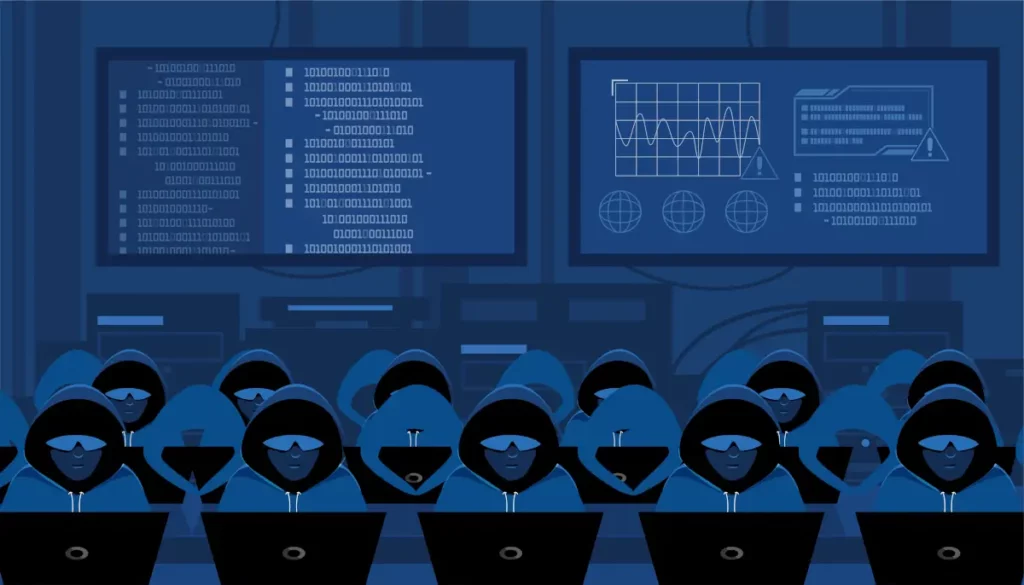Public institutions, businesses, citizens… no one is immune to cybercrime. Hackers exploit our growing dependency on new technologies and data to infiltrate information systems. Once they gain access to these systems, cybercriminals deploy ransomware, steal data, eavesdrop on organizations… DataScientest provides an overview of this menace.
How pervasive is cybercrime?
The digitalization of modern societies brings with it a new risk: cybercrime. With the most valuable data being stored on servers or in data centers, hackers take advantage of this to gain access and extract them. This has become a highly lucrative market, which accounts for the surge in cybercrime over recent years.
Over the past five years, the number of cyberattacks has surged by 40%, with 278,770 attacks recorded in the year 2023 alone.
Currently, almost half of the companies have experienced at least one attack with a significant impact on their operations.
What is the cost of cybercrime?
$8 trillion is the estimated cost of cybercrime globally in 2023, representing a 15% increase. In France, this increase even reaches 38% (from 93 billion in 2023 to 129 billion in 2024).
Globally, the growth of cyberattacks far outpaces the GDP of countries. Furthermore, if cybercrime were a nation, it would rank as the third-largest global power, following the United States and China.
What does this cost involve?
This figure includes all financial losses resulting from cybercrime. Examples include loss of company data, business interruptions, repair expenses, ransom payments, and more.

How are cyberattacks becoming more sophisticated?
For cybercriminals, the most effective attack arises from human error. Specifically, phishing. This practice, where victims are lured through a fake link, remains the primary method of hacker attacks (in 60% of cases).
Even though this technique has been around for ages, it is becoming more refined. Hackers brazenly impersonate trusted entities, like public institutions, to achieve their objectives.
In addition to phishing, cybercrime is diversifying. Notably through denial of service attacks, which are on the rise. This approach floods the network with numerous requests. Unable to handle these requests, the information system becomes increasingly vulnerable.
Beyond these large-scale attacks, cybercrime covers all crimes and misdemeanors committed via an IT system. Examples include fake investments, online trafficking, information manipulation, identity theft, credit card fraud, and more.
What are the objectives behind hacker attacks?
Apart from the variety of attacks, cybercrime also pursues diverse goals:
- Ransom demands: by deploying ransomware, hackers completely block access to data. They may demand ransoms reaching into billions of euros in exchange for restoring normalcy or not disclosing the stolen personal information.
- Cyber espionage: this form of cybercrime intensifies in tense geopolitical circumstances. With the Ukraine war and Middle East conflicts, the prospect of a third World War occasionally arises. Unlike the previous century, a large portion of these battles occur on IT networks. They wield a secret weapon: highly skilled hackers who can infiltrate IT systems (or defend them). Beyond states, companies in competitive sectors (aerospace, industry, automotive, …) can also suffer from espionage.
- Cyber sabotage: these actions aim to destabilize. Depending on the situation, it may involve tarnishing the organization’s image, spreading false information, or even disrupting a company’s operations (without necessarily demanding a ransom).

What are the challenges in cyber defense?
In light of the alarming state of cybercrime, companies need white-hat hackers more than ever. These cybersecurity specialists know how to counter hacker attacks with their expertise in protecting information systems.
The issue is that France is facing a talent shortage. There aren’t enough experts to tackle the challenges of IT security. Hence the importance of training to develop the skills needed for the future. With DataScientest, you will learn to identify vulnerabilities and prevent attacks while implementing all necessary actions to mitigate their impacts. Join us!










